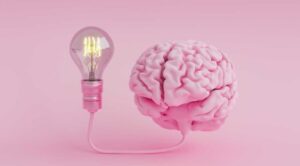Some of our neurons are activated when we move, while others are activated when we see other people moving. This means that we unconsciously imitate the movements of other people and share their experiences. ‘Mirror Neurons’, which are within the field and knowledge of neuroscience, were first discovered in the motor planning region of the brains of macaques, a monkey species. Afterwards, it was determined that Mirror Neurons also exist in humans in studies conducted with Electroencephalogram (EEG, brain electrical activity) and functional Magnetic Resonance Imaging (fMRI, brain blood circulation) methods, which allow the measurement of brain activity without any pain or damage to the subject. Mirror Neurons in humans are not only limited to movement activity as in monkeys but are more comprehensive as they are also found in the emotion and feeling regions of the brain.
Imitation
Recent neuroscience studies have shown that Mirror Neurons are active both when you move and when you watch movement. Your neurons in the premotor cortex plan to move your legs when you see another person moving, even if you are not moving. So, when you see another person doing something, you do the same thing in your brain. However, in order to mirror someone else’s action, your brain must ‘resonate’ with a motor program that it has already learnt. For example, in order to mirror the movements of a ballerina, even if you are not a ballerina, you need to have some idea of what it is like to perform these movements. Although Mirror Neurons do not play a role in “imitation”, they seem to be involved in imitation behaviour through the senses of hearing and sight.
Mirroring Emotions
The area we would like to draw special attention here is ‘Mirrored Emotions’. In other words, when a person sees the Emotional State of another person, the regions of the brain related to the same emotion are activated and become able to transmit these emotions. This Emotion Mirroring is thought to be the basis of ‘Empathy’. In other words, our Mirror Neurons play a leading role in our ability to understand what each other feel. Scientific studies show that lack of Empathy is most common in Autism and that this is caused by less mirror neuron activity.
Neuroscience research on mirror neurons in recent years shows that mirror neurons play an active role in the emergence of “herd psychology”. For example, when we see someone who is scared while watching a film, we also feel fear, we make the same movements with other people while watching a match, we make the same movements and feel the same emotions as other people in crowds, we yawn when the other person yawns, can be shown as examples of the activities of Mirror Neurons.
In terms of Neuromarketing
In terms of marketing, we see that Mirror Neurons are effective on our purchasing behaviours. When the emotions of the target audience are well analyzed in the advertisements, with the help of Mirror Neurons, the feelings of adopting the product / brand in the advertisement and finding it suitable for oneself are strengthened and Mirror Neurons are effective in encouraging the target audience to buy.
CONCLUSION: The discovery of Mirror Neurons is one of the most exciting events in cognitive neuroscience. Despite intensive studies for many years, it is an interesting and still developing area of brain-based research, as not all issues related to Mirror Neurons have been fully elucidated.
References
Rita Carter, Rizzolatti-2001, Luppino-2001





